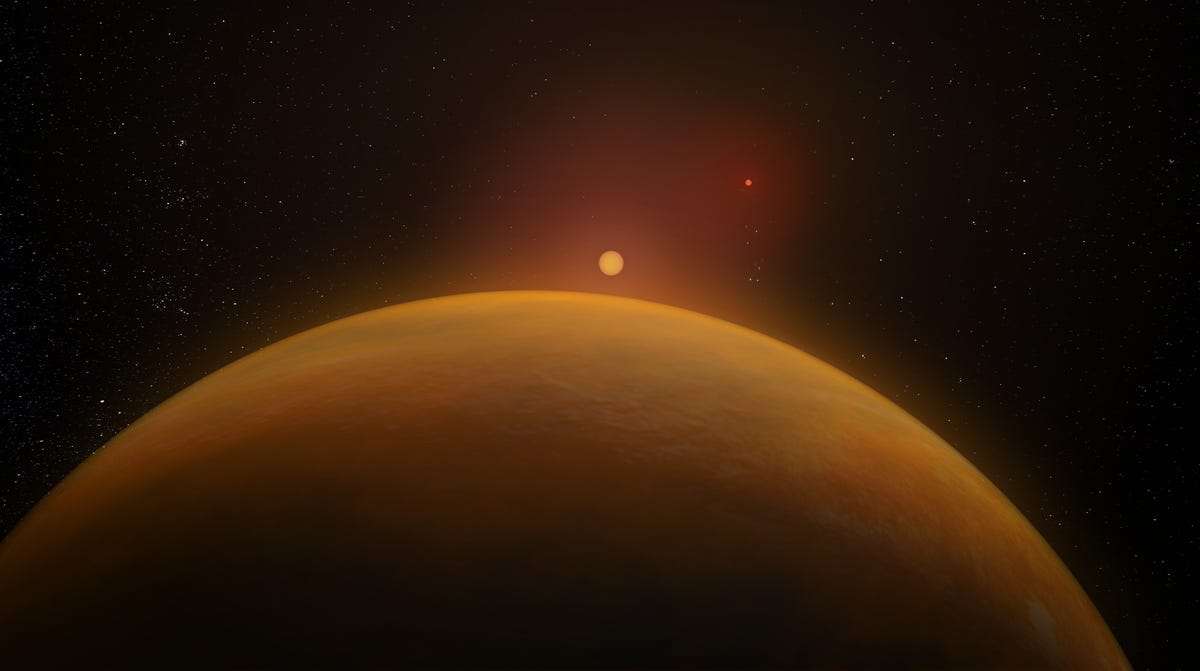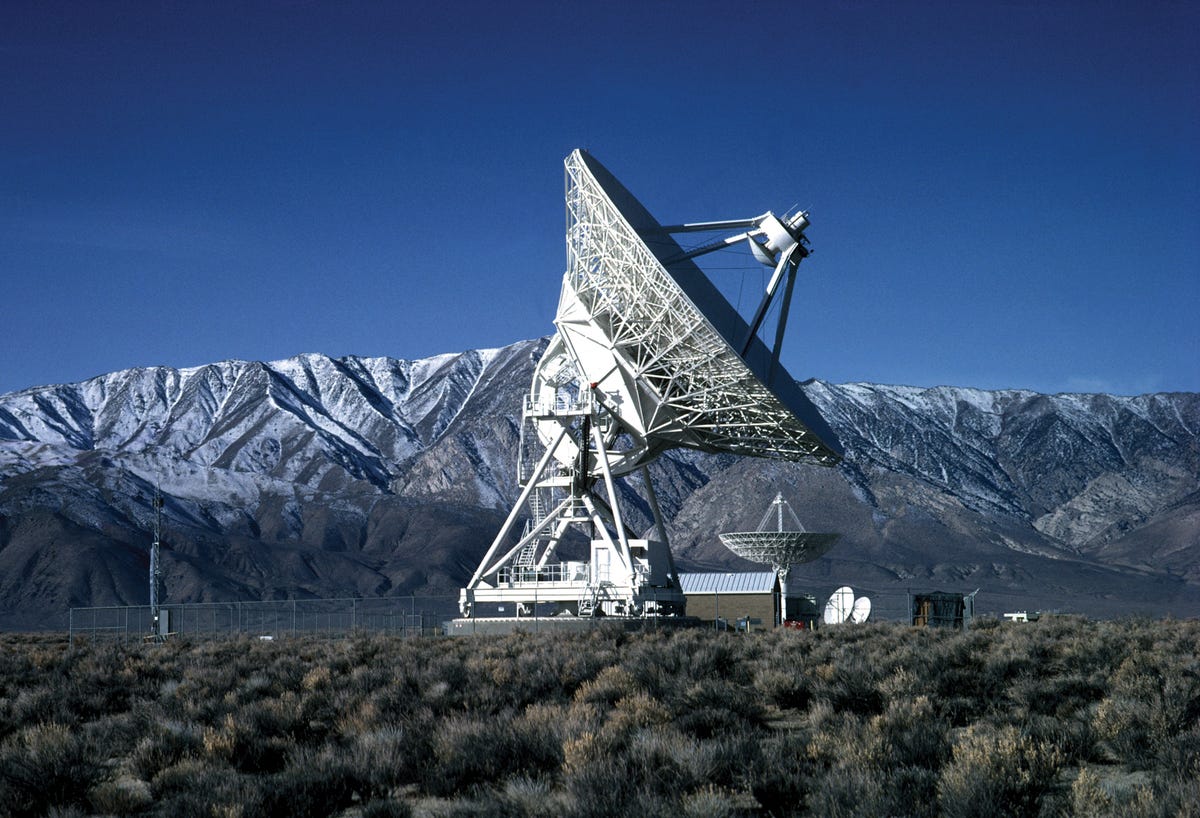It began with a wobble.
Some 20 light-years away from Earth, which is quite close on a cosmic scale, scientists noticed a star acting a little funny. Something almost imperceptibly small appeared to be tugging on it, forcing it to “wobble” in its stellar neighborhood, as astronomers would whimsically say.
Aha, an exoplanet.
This was a Jupiter doppelganger, to be exact, with a mass about twice the size of our solar system’s own gas giant, an orbit rounds its star every 284 days and a position that falls slightly closer to its star than Venus floats from the sun. And from here, an already invigorating achievement, the discovery team decided to take things to the next level — especially because the wobbly star at hand exists as part of a binary star system, meaning it’s one of two stars orbiting around each other.
After careful analysis, these researchers hit the jackpot. They used their faint signal of a foreign world to develop what they deem the first ever blueprint of a complete, 3D structure of not just a binary star system orbit, but one with a planet roaming within.
And before we go any further, yes, you can check out a mesmerizing, visual representation of those schematics right below. (More technical details can be found in a paper published Thursday in The Astronomical Journal).
OK, cool, what can we do with this?
As Earthlings, we’re used to living alongside our lone sun, but when calculating star populations across the universe, it seems that our planet’s personal space heater is a minority. Generally, stars prefer traveling in duos, trios and even quartets.
“Since most stars are in binary or multiple systems, being able to understand systems such as this one will help us understand planet formation in general,” Salvador Curiel, of the National Autonomous University of Mexico and first author of the new paper, said in a statement. Data we get from our own corner of the cosmos isn’t really enough to understand some of the greater rules for how planets are made or how they evolve. It’s always better to have a wider sample size.
Returning to the binary star system we’re looking at with Curiel’s 3D diagram, this particular pair, called GJ 896AD, is importantly made up of two red dwarfs — aka the smallest, coolest kind of star on the main sequence and most common stellar genre in the Milky Way.
And what better place to start decoding the secrets of multi-star systems than with the most prevalent kind in our galaxy?


From above a planet about twice the size of Jupiter, this artist’s conception shows the star that planet is orbiting and that star’s binary companion in the distance.
Sophia Dagnello, NRAO/AUI/NSFTo paint a picture of what this faraway realm looks like, the researchers say that the larger of the two stars, which is the one orbited by the exoplanet, has about 44% the mass of our sun. The smaller one is only about 17% the mass of our sun. So small, so cute. Oh, and they orbit each other once every 229 Earth years, while the super-Jupiter follows an orbit that’s inclined roughly 148 degrees from the two stars’ paths.
“There are alternate theories for the formation mechanism, and more data can possibly indicate which is most likely,” Joel Sanchez-Bermudez of UNAM and author of the study, said in the release. “In particular, current models indicate that such a large planet is very unlikely as a companion to such a small star, so maybe those models need to be adjusted.”
Thank you, Very Long Baseline Array
The driving force behind this astronomical development — metaphorically and literally — is the National Science Foundation’s Very Long Baseline Array. This science mechanism consists of a network of 10 observing stations spread across the US, each one equipped with a 25-meter radio antenna dish and control building. Basically, the stations individually capture deep space information, then connect-the-dots to compile a super clear representation of what’s going on out there in the cosmos.


In Northern California, sits one of the identical 10 antennas of the Very Long Baseline Array.
NRAO/AUI/NSFFor this study, of GJ896AB, the scientists collected optical observations spanning a staggering range of time: 1941 to 2017. They then called on VLBA observations taken between 2006 and 2011, plus made new VLBA observations in 2020. Slap all of that together and you get an awesome measurement of GJ896AB’s positions over time, which can be combined into something like a stop-motion conception of how this star system looks.
“The planet moves around the main star in the opposite direction to that of the secondary star around the main star,” said Gisela Ortiz-León, of the Max Planck Institute for Radio Astronomy and author of the study. “This is the first time that such dynamical structure has been observed in a planet associated with a compact binary system that presumably was formed in the same protoplanetary disk.”
“We can do much more work like this with the planned Next Generation VLA,” said Amy Mioduszewski, of the National Radio Astronomy Observatory and author of the paper. “With it, we may be able to find planets as small as the Earth.”

